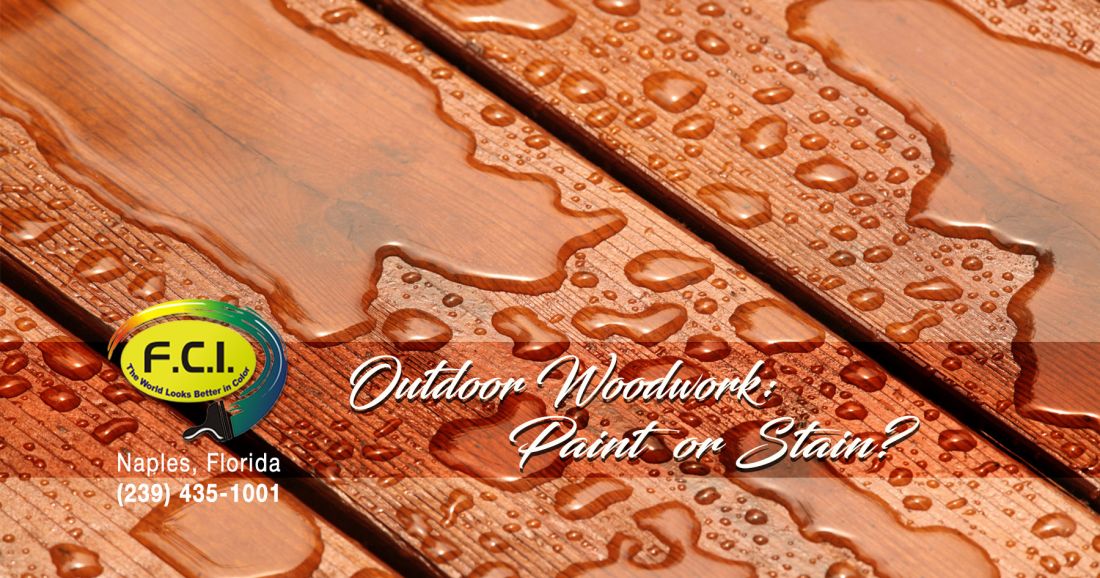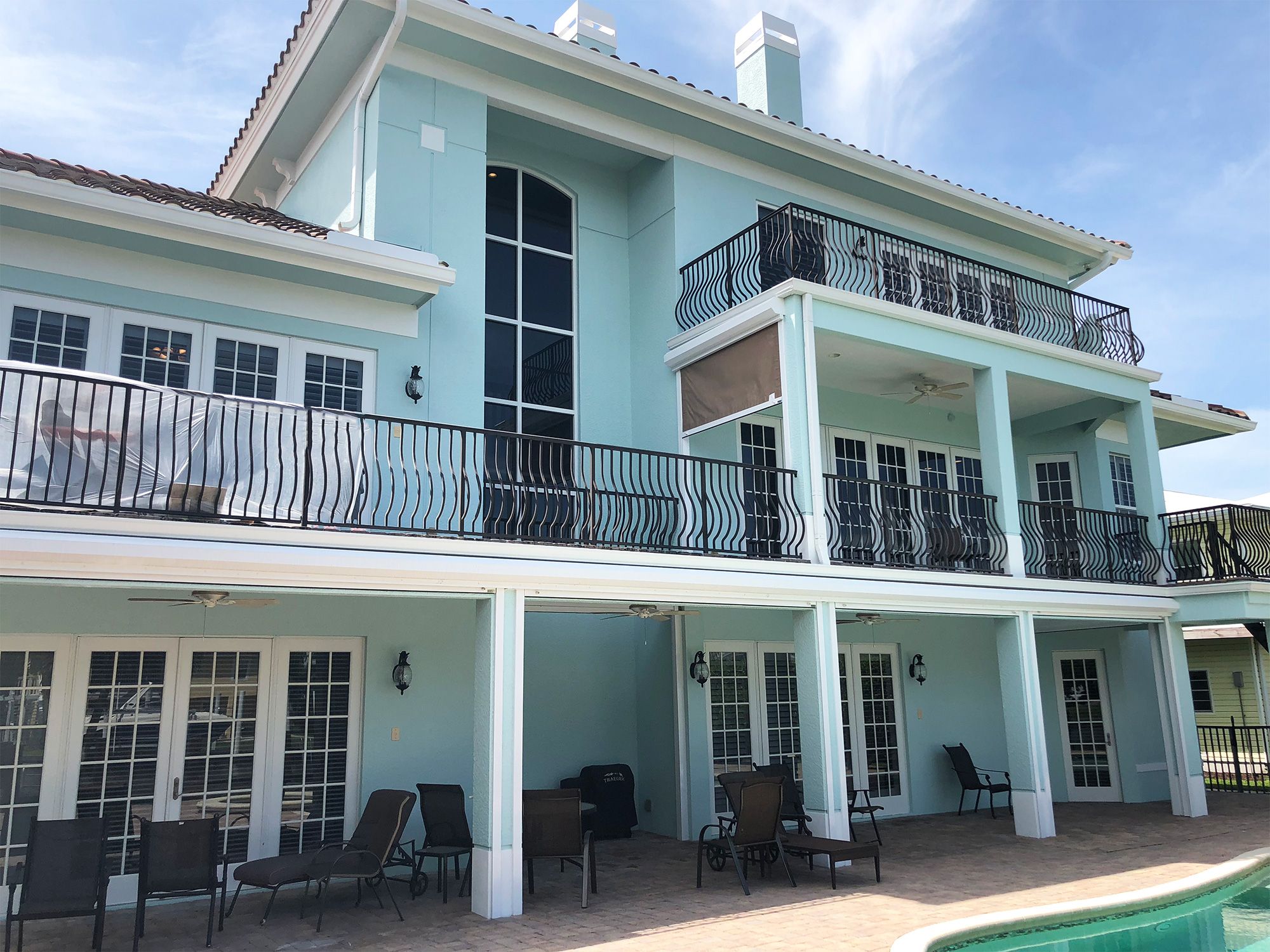
Weighing the Options for Using Paint or Stain on Outdoor Woodwork
When it comes time to paint the exterior of one’s home or business, the question of how to address ancillary structures, such as decks, railings, fences, pergolas and the like usually comes up. While paint is generally used for most exterior walls, many home and business owners like to keep the natural look of any wood structures that may accent the main walls. In such cases, the use of stain rather than paint may be a viable solution; however, many people tend to be confused about the differences between paint and stain, as well as their correct application. Thus, consider this blog post a primer of sorts on the differences between paint and stain, with some guidelines on when, how and why to use either of the two.
Differences Between Paint and Stain
The easiest way to differentiate paint from stain is that paint coats and hides the original surface, while stain penetrates the surface. Clear and semi-transparent stains also serve to enhance the original grain and beauty of the wood, while semi-solid stains add more color, but hide more of the grain. Solid stains come the closest to mimicking paint, and completely hides the wood grain.
Paint and stain both have positive and negatives to weigh in determining which to use, but either one is better than leaving bare wood exposed to the elements.
Positive factors to consider with both include:
Paint
- greater number of color choices
- deeper and more vibrant color options
- greater protection from sun and water damage
- greater longevity between re-applications
- can be used on other materials besides wood
Stain
- finish options include clear, semitransparent, semi solid and solid
- ability to enhance wood’s natural beauty
- ease of application
- no blistering
- better handling of abrasion from foot traffic
- no need to strip before re-application
Negative factors to consider:
Paint
- horizontal surfaces subject to peeling and blistering
- potential for rapid weathering with intense water, ice or sun exposure
- intensive scraping and stripping required before re-application
Stain
- the need for frequent—one-to-five-year—re-applications depending upon opacity and exposure
- cannot be used on previously painted wood
- can only be used on wood and most wood composites
Color and Surface to be Treated Key Considerations
All in all, the choice of whether to ultimately go with stain or paint depends upon each building owner’s particular needs and specific weighting of the above listed positive and negative factors. Color should perhaps be the first consideration, as the color choice may be limited with stains. The surface to be treated should take secondary consideration, as it often dictates the choice. For example, those wanting to retain and enhance the natural look of wood will likely want to lean towards using stain. Likewise, stain is usually considered the better option for porch floors and decking due to its superior ability to withstand foot traffic.
If you’re still stumped about whether to opt for paint or stain, FCI Painting can help you assess the job and determine the best painting or staining options for all of your outside ancillary structures. Contact FCI Painting online, or by calling (239) 435-1001, to see what our painting specialists can do to help beautify the exterior of your home or business.













